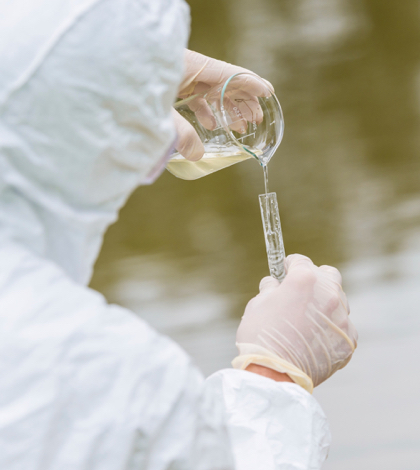Some Northeast Fresno residents are frustrated and worried. But all of the residents want to know if it’s safe to drink the water coming into their homes.
The problem is not new. Mari Rose and Shann Conner claim the water in their homes began to turn yellowish-brown more than a decade ago. And the information regarding the source of the discolored water remains a mystery.
Although Rose and Conner reported their discolored water to the city some years ago, now, more than ten years later they still don’t have answers. Conner has kept a binder of correspondence with the city and Rose has labeled bottles of the discolored water to track the problem. But definitive answers have eluded both the impacted residents as well as the city.
Even more confusing is that not all residents in northeast Fresno have been impacted. Mapping the homes with the discolored water – or worse yet, elevated lead levels in the water – looks like a game of darts. One house here, then the house next door and then nothing for a block or two. Even more perplexing is when only one faucet in a house dispenses tainted water but every other facet in the home dispenses clear water.
The questions are many, the answers are very few.
Some feel the problem may be with the galvanized iron piping inside homes though not all homes with these pipes are experiencing the problem. Does the problem stem from the mixing of groundwater with canal water? One report suggests that the differences in pH and alkalinity between the two types of water might affect the corrosion of plumbing fixtures or is it the thinner layer of zinc coating from Asian manufacturers that are now used almost exclusively in homes?
Also of exceptional concern in some northeast Fresno homes is the increased levels of lead in the water. The Environmental Protection Agency’s (EPA) action level is 15 parts per billion. Anything above that point call for steps to be taken to correct the problem.
Karen Micheli’s water from her kitchen sink is currently measuring at 109 parts per billion.
It’s very scary,” said Micheli. “We’ve got two young grandchildren. I don’t want them drinking this water.”
Dozens of homes in northeast Fresno have been found to have elevated lead levels in the water. Hence, the problem was brought to the attention of the State Water Resources Control Board (SWRCB).
Kassy Chauhan, a senior engineer with SWRCB’s drinking water division has said, “We have regulatory authority across the state to make sure water meets state drinking water standards. Part of that is lead and copper… We’re very concerned about lead above the (EPA’s) action level.”
Though the symptoms of lead poisoning are subtle at first – trouble sleeping or small behavioral changes — if not treated early on, can go awry very quickly. Dr. Jolie Limon, Valley Children’s Hospital’s chief of pediatrics said, “I would really encourage families to have their kids tested because you just don’t know.
Yet, for now, the problem persists. Thomas Esqueda, director of the city’s Public Utilities Department, has indicated that some of the affected homes may have a few things in common. Galvanized pipes could be corroding due to minimally contaminated soil or perhaps it’s the fixtures installed in the homes or how the pipes are buried underground. One temporary solution to bring down the lead levels is to flush the water for a few minutes. The city is urging residents to due this temporarily.
Esqueda also pointed out that, “Water doesn’t know one house from another, or one room from another. If it was just the water, we would expect it to be reacting in a more uniform, consistent pattern. Because it’s not, if forces us to be more hesitant in saying, ‘Ok, this is the solution.”
For now, the problem is not uniform or consistent. The answers are elusive and northeast Fresno residents are caught in the middle with discolored water, elevated levels of lead in some homes and corroded pipes in others.
“Inconsistent and multifaceted is the way I describe it,” said Chauhan.
 California Water News Daily Your Source For Water News in California
California Water News Daily Your Source For Water News in California


